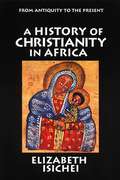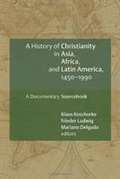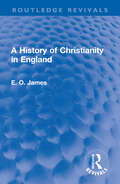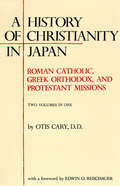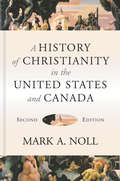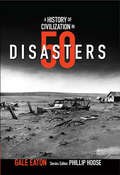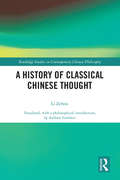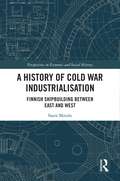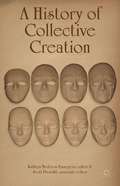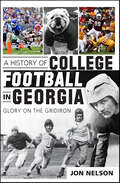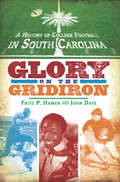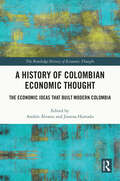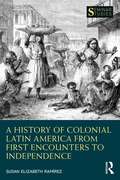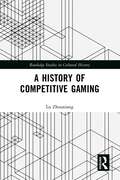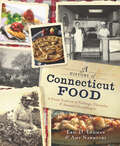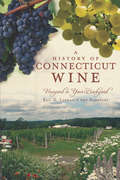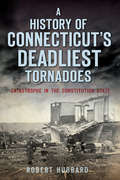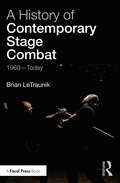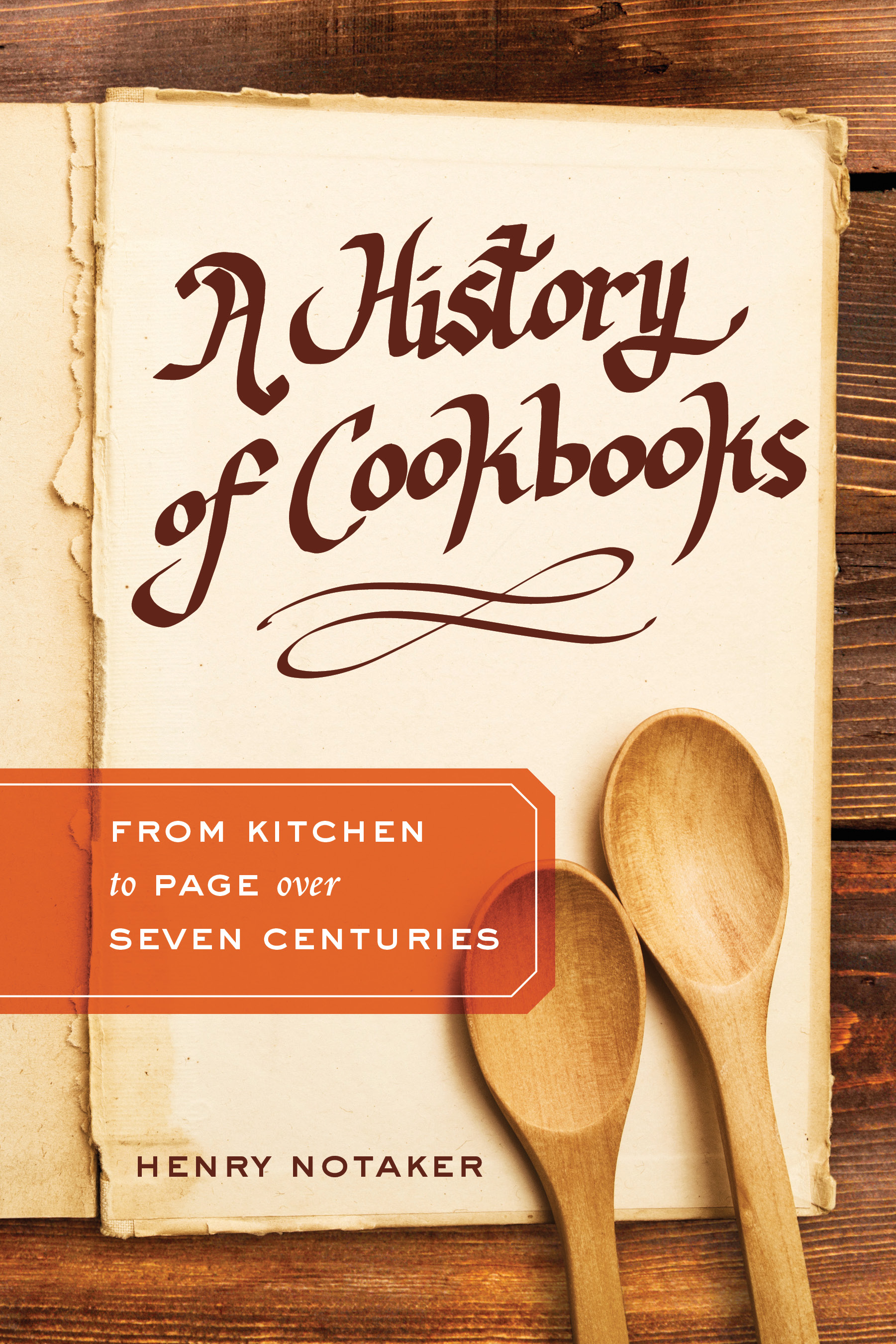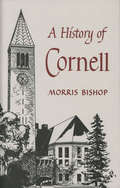- Table View
- List View
A History of Christianity in Africa: From Antiquity to the Present
by Elizabeth IsicheiThis unprecedented work is the first one-volume study of the history of Christianity in Africa. Written by Elizabeth Isichei, a leading scholar in this field, A History of Christianity in Africa examines the origins and development of Christianity in Africa from the early story of Egyptian Christianity to the spectacular growth, vitality, and diversity of the churches in Africa today. Isichei opens with the brilliance of Christianity in Africa in antiquity and shows how Christian Egypt and North Africa produced some of the most influential intellects of the time. She then discusses the churches founded in the wake of early contacts with Europe, from the late fifteenth century on, and the unbroken Christian witness of Coptic Egypt and of Ethiopia. Isichei also examines the different types of Christianity in modern Africa and shows how social factors have influenced its development and expression. With the explosive growth of Christianity now taking place in Africa and the increasingly recognized significance of African Christianity, this much-needed book fills the void in scholarly works on that continent's Christian past, also foreshadowing Christian Africa's influential future.
A History of Christianity in Asia, Africa, and Latin America, 1450-1990: A Documentary Sourcebook
by Klaus Koschorke Frieder Ludwig Mariano Delgado Roland SpliesgartA majority of Christians live in Africa, Asia, and Latin America. This book documents the history of Christianity for these regions covering the period 1450-1990. It covers the multitude of local initiatives, experiences, and varieties of Christianity in diverse cultural contexts addressing such questions as the colonial conquest and slavery.
A History of Christianity in Asia, Africa, and Latin America, 1450-1990: A Documentary Sourcebook
by Roland SpliesgartIn cooperation with Roland SpliesgartThe map of world Christianity has changed dramatically in just the last century. Today the majority of Christians live in Africa, Asia, and Latin America, making Christianity a world religion as never before in history.Given that global reality, Klaus Koschorke, Frieder Ludwig, and Mariano Delgado have created the first comparative documentary history of Christianity for these regions covering the period 1450–1990. Taking the changing ecumenical conditions into account, this volume enlarges the horizon of classical church historiography. In contrast to the prevailing Western perspectives on the history of Christianity in Africa, Asia, and Latin America, voice is given here to the multitude of local initiatives, specific experiences, and varieties of Christianity in very diverse cultural contexts -- addressing such questions as the colonial conquest, slavery, and the demand for ecclesiastical independence.
A History of Christianity in England (Routledge Revivals)
by E.O. JamesFirst published in 1949, A History of Christianity in England is a kaleidoscopic view of the religious situation in England for readers and students who wish to eventually take it up as a serious study. The author asserts that the influence of the Church and the State in the development of the English national life and character has also led to the growth of a unique English Christianity. English religion appears neither completely Catholic, properly Protestant nor consistently Liberal, rendering itself an enigma. The author believes that the confusion of its various discordant parts can be resolved by situating English Christianity within a historical continuum. This book will be of interest to students of theology, history and Christianity.
A History of Christianity in Japan
by Otis CaryCary's impressive work, first published in two volumes, appears here in a convenient one-volume edition. The first part deals with Roman Catholic and Greek Orthodox missions; the second, with Protestant missions.
A History of Christianity in Japan
by Otis CaryCary's impressive work, first published in two volumes, appears here in a convenient one-volume edition. The first part deals with Roman Catholic and Greek Orthodox missions; the second, with Protestant missions.
A History of Christianity in the United States and Canada
by Mark A. NollA best-selling text thoroughly updated, including new chapters on the last 30 years"An excellent study that will help historians appreciate the importance of Christianity in the history of the United States and Canada." – The Journal of American History &“Scholars and general readers alike will gain unique insights into the multifaceted character of Christianity in its New World environment. Nothing short of brilliant.&” – Harry S. Stout, Yale University &“A new standard for textbooks on the history of North American Christianity.&” – James Turner, University of Notre Dame Mark Noll&’s A History of Christianity in the United States and Canada has been firmly established as the standard text on the Christian experience in North America. Now Noll has thoroughly revised, updated, and expanded his classic text to incorporate new materials and important themes, events, leaders, and changes of the last thirty years. Once again readers will benefit from his insights on the United States and Canada in this superb narrative survey of Christian churches, institutions, and cultural engagements from the colonial period through 2018.
A History of Civilization in 50 Disasters
by Phillip Hoose Gale EatonThe History in 50 series explores history by telling thematically linked stories. Each book includes 50 illustrated narrative accounts of people and events some well-known, others often overlooked that, together, build a rich connect-the-dots mosaic and challenge conventional assumptions about how history unfolds. The Fall 2015 list also includes A History of Travel in 50 Vehicles. Future titles include A History of Medicine in 50 Discoveries, A History of American Culture in 50 Innovators, A History of the Universe in 50 Milestones, A History of Sports in 50 Athletes, and A History of Progress in 50 Hoaxes. In A History of Civilization in 50 Disasters, Gale Eaton weaves tales of the disasters that happen when civilization and nature collide. Volcanoes, fires, floods, and pandemics have devastated humanity for thousands of years, and human improvements such as molasses holding tanks, insecticides, and deepwater oil rigs have created new, unforeseen hazards yet civilization has advanced not just in spite of these disasters but in part because of them.
A History of Civilization in 50 Disasters (History in #50)
by Phillip Hoose Gale EatonThe earth shakes and cracks open. Volcanoes erupt. Continents freeze, bake, and flood. Droughts parch the land. Wildfires and hundred-year storms consume anything in their paths. Invisible clouds of disease and pestilence probe for victims. Tidal waves sweep ashore from the vast sea. The natural world is a dangerous place, but one species has evolved a unique defense against the hazards: civilization. Civilization rearranges nature for human convenience. Clothes and houses keep us warm; agriculture feeds us; medicine fights our diseases. It all works--most of the time. But key resources lie in the most hazardous places, so we choose to live on river flood plains, on the slopes of volcanoes, at the edge of the sea, above seismic faults. We pack ourselves into cities, Petri dishes for germs. Civilization thrives on the edge of disaster. And what happens when natural forces meet molasses holding tanks, insecticides, deepwater oil rigs, nuclear power plants? We learn the hard way how to avoid the last disaster--and maybe how to create the next one. What we don't know can, indeed, hurt us. This book's white-knuckled journey from antiquity to the present leads us to wonder at times how humankind has survived. And yet, as Author Gale Eaton makes clear, civilization has advanced not just in spite of disasters but in part because of them. Hats off to human resilience, ingenuity, and perseverance! They've carried us this far; may they continue to do so into our ever-hazardous future. The History in 50 series explores history by telling thematically linked stories. Each book includes 50 illustrated narrative accounts of people and events--some well-known, others often overlooked--that, together, build a rich connect the-dots mosaic and challenge conventional assumptions about how history unfolds. Dedicated to the premise that history is the greatest story ever told. Includes a mix of "greatest hits" with quirky, surprising, provocative accounts. Challenges readers to think and engage. Includes a glossary of technical terms; sources by chapter; teaching resources as jumping-off points for student research; and endnotes.
A History of Classical Chinese Thought (Routledge Studies in Contemporary Chinese Philosophy)
by Zehou LiLi Zehou is widely regarded as one of China’s most influential contemporary thinkers. He has produced influential theories of the development of Chinese thought and the place of aesthetics in Chinese ethics and value theory. This book is the first English-language translation of Li Zehou’s work on classical Chinese thought. It includes chapters on the classical Chinese thinkers, including Confucius, Mozi, Laozi, Sunzi, Xunzi and Zhuangzi, and also on later eras and thinkers such as Dong Zhongshu in the Han Dynasty and the Song-Ming Neo-Confucians. The essays in this book not only discuss these historical figures and their ideas, but also consider their historical significance, and how key themes from these early schools reappeared in and shaped later periods and thinkers. Taken together, they highlight the breadth of Li Zehou’s scholarship and his syncretic approach—his explanations of prominent thinkers and key periods in Chinese intellectual history blend ideas from both the Chinese and Western canons, while also drawing on contemporary thinkers in both traditions. The book also includes an introduction written by the translator that helpfully explains the significance of Li Zehou’s work and its prospects for fostering cross-cultural dialogue with Western philosophy. A History of Chinese Classical Thought will be of interest to advanced students and scholars interested in Chinese philosophy, comparative philosophy, and Chinese intellectual and social history.
A History of Cold War Industrialisation: Finnish Shipbuilding between East and West (Perspectives in Economic and Social History)
by Saara MatalaThis monograph explores the economic consequences of the Cold War, a polarised world order which politicised technology and shaped industrial development. It provides a detailed archival-based history of the Finnish shipbuilding industry (1952–1996), which f lourished, thanks to the special relationship between Finland and the Soviet Union. Overall, it shows how a small country, Finland, gained power during the Cold War through international economic and technological cooperation. The work places Finland in a firmly international context and assesses the state–industry relationship from five different angles: technopolitics, trade infrastructure, techno-scientific cooperation, industrial reorganisation, and state aid. It presents a novel way to analyse industrialisation as an interaction between institutional stabilisation and f luctuation within a techno-economic system. In so doing, it makes empirical, theoretical, and methodological contributions to the history of industrial change. A History of Cold War Industrialisation will be of interest to advanced students and scholars in economic history, maritime history, Cold War history, and international political economy.
A History of Collective Creation
by Kathryn Mederos Syssoyeva Scott ProudfitCollective creation - the practice of collaboratively devising works of performance - rose to prominence not simply as a performance making method, but as an institutional model. By examining theatre practices in Europe and North America, this book explores collective creation's roots in the theatrical experiments of the early twentieth century.
A History of College Football in Georgia: Glory on the Gridiron (Sports)
by Jon NelsonWhen teams meet on football fields across Georgia, it's more than a game--it's a battle for bragging rights and dominance in a state that prizes football above all other sports. Join seasoned Georgia sports journalist Jon Nelson as he tracks the history of college football statewide. Whether it's Georgia Southern's glory days with legendary coach Erk Russell, the bitter rivalry between Georgia Tech and the University of Georgia, the Mercer College team's historic beginnings or Shorter University's up-and-coming program, every team in Georgia makes the cut in this hard-hitting history. Enhanced by an appendix with each school's records, championship statistics and coaching accomplishments, this is a book no Peach State football fan can do without.
A History of College Football in South Carolina: Glory on the Gridiron (Sports)
by John Daye Fritz P. HamerThe Medicos, the Purple Hurricane, the Seceders- all South Carolina football mascots that long ago drifted into history. From as early as 1889, college football began to take hold of South Carolina. The fans of the state's first intercollegiate game could hardly have foreseen how it would steadily grow from a competition between amateurs into tightly organized teams with well-paid coaches and demanding alumni, all with a passionate desire to win. This volume goes beyond Clemson and Carolina to trace the history of college teams from all over the state, including Wofford, Furman, SC State, Presbyterian College, Erskine, Claflin, The Citadel, MUSC, the College of Charleston, Newberry College, Benedict College and Allen University. Join museum curator Fritz Hamer and longtime South Carolina high school football coach John Daye as they celebrate the state's most notable coaches, players and rivalries, as well as the many unsung heroes who have helped to make the sport a statewide obsession.
A History of Colombian Economic Thought: The Economic Ideas that Built Modern Colombia (The Routledge History of Economic Thought)
by Andrés Álvarez Jimena HurtadoEver since the quest for independence between 1810 and 1819, economic thought in Colombia has been shaped by policy debates and characterized by a pragmatic and eclectic approach. Economic thought in Colombia can only be revealed through the exploration of economists’ practices and the role of economic arguments within broader public debate. This history of Colombian economic thought provides a detailed account of major issues that have marked the constant feedback between economic ideas and economic practice in Colombia during the 19th and 20th centuries. This volume is thus a history of the interaction between ideas and policy. Those involved in these debates – politicians, public officials, journalists, and, latterly, professional economists – established direct contact with what can be identified as the centers of production of economic theory (both in Europe and the US) and entered regional and local networks in economics, but were not just importers of ideas or theories. The way in which they read, discussed, transformed and applied economic theories in Colombia makes for a rich environment for the production and implementation of economic policies that drew, diverged and transformed the way economics was understood and used as a source of knowledge for practical concerns. This is why the history of Colombian economic thought does not fit into traditional typologies of economic schools and why it must be understood as part of a political debate and within a political, social and cultural context that demanded specific solutions to urgent social demands. Through the study of what was taught, when and how, at the beginnings of the republican era, and why and how professional economists came to lead public debate and economic policy making in the 20th century, this book explores the foundations of this permanent interaction between theory and practice. This book will be of significant interest to readers of history of economic thought, economic history and the history of Colombian and Latin American economic, political and social life more broadly.
A History of Colonial India: 1757 to 1947
by Himanshu Roy and Jawaid AlamThis volume brings together interdisciplinary perspectives on British colonial rule in India. It draws on sociology, history, and political science to look at key events and social process, between 1757 to 1947, to provide a comprehensive understanding of the colonial history. It begins with the introductory backdrop of the British East India Company when its ship docked at Surat in 1603 and ends with the partition and independence in 1947. A compelling read, the book explores a range of key themes which include: – Early colonial polity, economic transformation, colonial educational policies, and other initial developments; – The revolt of 1857 and its aftermath; – Colonial subjectivities and ethnographic interventions, colonial capitalism and its insititutions, – Constitutional developments in colonial India; – Early nationalist politics, the rise of Indian National Congress, the role of Gandhi in nationalist politics, and the Quit India movement; – Social movements and gender politics under the colonial rule; – Partition of India and independence. Accessibly written and exhaustive, this volume will be essential reading for students, teachers, scholars, and researchers of political science, history, sociology and literature.
A History of Colonial Latin America from First Encounters to Independence (Seminar Studies)
by Susan Elizabeth RamírezA History of Colonial Latin America from First Encounters to Independence is a concise and accessible volume that presents the history of the Iberian presence in the Americas, from the era of exploration and conquest to the disruption and instability following independence. This history of the Iberian presence in the Americas contains stories of curiosity, vision, courage, missed communication, miscalculation, insatiability, prejudice, and native collaboration and resistance. Beginning in 1492, Ramirez establishes the context for the era of exploration and conquest that follows. The book then surveys the activities of Cortes and Pizarro and the impact on native peoples, Portuguese activity on the eastern coast of South America, the demographic collapse of the native population, the role of the Catholic Church, and new policy initiatives of the Bourbons who inherited the throne in 1700. The narrative involves Spaniards, Native Americans of innumerable ethnic groups, Moorish, native, and black slaves, and a whole new category of people of mixed blood, collectively known as the castas, acting in the steamy tropics of the lowlands, marching across parched deserts, trekking to oxygen-low mountain summits, and settling all the ecological niches in between. The book includes important primary documents and maps to provide students with even more context to this important part of Latin American history. It will be of interest to students and scholars of Latin American history and culture.
A History of Competitive Gaming (Routledge Studies in Cultural History)
by Lu ZhouxiangCompetitive gaming, or esports – referring to competitive tournaments of video games among both casual gamers and professional players – began in the early 1970s with small competitions like the one held at Stanford University in October 1972, where some 20 researchers and students attended. By 2022 the estimated revenue of the global esports industry is in excess of $947 million, with over 200 million viewers worldwide. Regardless of views held about competitive gaming, esports have become a modern economic and cultural phenomenon. This book studies the full history of competitive gaming from the 1970s to the 2010s against the background of the arrival of the electronic and computer age. It investigates how competitive gaming has grown into a new form of entertainment, a sport-like competition, a lucrative business and a unique cultural sensation. It also explores the role of competitive gaming in the development of the video game industry, making a distinctive contribution to our knowledge and understanding of the history of video games. A History of Competitive Gaming will appeal to all those interested in the business and culture of gaming, as well as those studying modern technological culture.
A History of Connecticut Food: A Proud Tradition of Puddings, Clambakes & Steamed Cheeseburgers (American Palate)
by Eric D. Lehman Amy NawrockiA History of Connecticut Food aims to acquaint the reader with the long and storied relationship of the state's people and their provisions. Each chapter will focus on a different crop, livestock, game, or prepared dish that Connecticut has either pioneered or made its own. Along with these brief histories, the book will feature traditional and modernized recipes. In short, A History of Connecticut Food will both inform the people of Connecticut about their culinary past and inspire them to explore it.
A History of Connecticut Wine: Vineyard in Your Backyard (American Palate)
by Eric D. Lehman Amy NawrockiWine has been meticulously crafted in Connecticut ever since colonists discovered wild grapes growing on their land. At first glance the New England climate appears inhospitable for this fastidious fruit but a number of varieties thrive here, including pinot gris, chardonnay, cabernet franc, cayuga white and st. croix. These carefully cultivated grapes have produced wines of unique characteristics and surprising quality. Join local wine enthusiasts Eric D. Lehman and Amy Nawrocki as they explore the intricacies of the region's local blends, the vintners that craft them, and the people who taste them. With vineyards and wineries in every corner of the state you're likely to find one that suits your palate in your backyard
A History of Connecticut's Deadliest Tornadoes: Catastrophe in the Constitution State (Disaster)
by Robert HubbardThe Wallingford tornado of 1878 took less than two minutes, but it killed at the rate of one person per second. Twisters in Connecticut are incredibly rare, but they're often disastrous and sometimes deadly. The Windsor tornado of 1979 destroyed a field of aircraft that had survived World War II. The 1787 Wethersfield tornado ripped off a barn roof in New Britain, traveled on to Newington and finally subsided in Wethersfield after destroying a family farm. Locals remember the 1989 cyclone that ripped through Hamden and cost the state millions of dollars in repairs. Join local author Robert Hubbard as he shares the tales of these natural disasters and those who witnessed them.
A History of Contemporary Chinese Art: 1949 to Present (Chinese Contemporary Art Series)
by Yan ZhouChinese art has experienced its most profound metamorphosis since the early 1950s, transforming from humble realism to socialist realism, from revolutionary art to critical realism, then avant-garde movement, and globalized Chinese art. With a hybrid mix of Chinese philosophy, imported but revised Marxist ideology, and western humanities, Chinese artists have created an alternative approach – after a great ideological and aesthetic transition in the 1980s – toward its own contemporaneity though interacting and intertwining with the art of rest of the world. This book will investigate, from the perspective of an activist, critic, and historian who grew up prior to and participated in the great transition, and then researched and taught the subject, the evolution of Chinese art in modern and contemporary times. The volume will be a comprehensive and insightful history of the one of the most sophisticated and unparalleled artistic and cultural phenomena in the modern world.
A History of Contemporary Stage Combat: 1969 - Today
by Brian LeTraunikA History of Contemporary Stage Combat chronicles the development of stage combat from the origins of the Society of British Fight Directors in 1969 to the modern day. Featuring interviews with some of the pioneers of this art form, the book analyzes how stage combat developed in response to the needs of the industry and the changing social mores in the United States, United Kingdom, Canada, the European Continent, Australia, and New Zealand. It also explores the quality of theatrical weaponry, as well as outcropping of stage combat such as intimacy design and theatrical jousting. A History of Contemporary Stage Combat is an excellent resource for actors, directors, stage combatants, theatre historians, and anyone with a love of action on stage and film.
A History of Cookbooks: From Kitchen to Page over Seven Centuries (California Studies in Food and Culture #64)
by Henry NotakerA History of Cookbooks provides a sweeping literary and historical overview of the cookbook genre, exploring its development as a part of food culture beginning in the Late Middle Ages. Studying cookbooks from various Western cultures and languages, Henry Notaker traces the transformation of recipes from brief notes with ingredients into detailed recipes with a specific structure, grammar, and vocabulary. In addition, he reveals that cookbooks go far beyond offering recipes: they tell us a great deal about nutrition, morals, manners, history, and menus while often providing entertaining reflections and commentaries. This innovative book demonstrates that cookbooks represent an interesting and important branch of nonfiction literature.
A History of Cornell
by Morris BishopCornell University is fortunate to have as its historian a man of Morris Bishop's talents and devotion. As an accurate record and a work of art possessing form and personality, his book at once conveys the unique character of the early university—reflected in its vigorous founder, its first scholarly president, a brilliant and eccentric faculty, the hardy student body, and, sometimes unfortunately, its early architecture—and establishes Cornell's wider significance as a case history in the development of higher education. Cornell began in rebellion against the obscurantism of college education a century ago. Its record, claims the author, makes a social and cultural history of modern America. This story will undoubtedly entrance Cornellians; it will also charm a wider public.Dr. Allan Nevins, historian, wrote: "I anticipated that this book would meet the sternest tests of scholarship, insight, and literary finish. I find that it not only does this, but that it has other high merits. It shows grasp of ideas and forces. It is graphic in its presentation of character and idiosyncrasy. It lights up its story by a delightful play of humor, felicitously expressed. Its emphasis on fundamentals, without pomposity or platitude, is refreshing. Perhaps most important of all, it achieves one goal that in the history of a living university is both extremely difficult and extremely valuable: it recreates the changing atmosphere of time and place. It is written, very plainly, by a man who has known and loved Cornell and Ithaca for a long time, who has steeped himself in the traditions and spirit of the institution, and who possesses the enthusiasm and skill to convey his understanding of these intangibles to the reader."The distinct personalities of Ezra Cornell and first president Andrew Dickson White dominate the early chapters. For a vignette of the founder, see Bishop's description of "his" first buildings (Cascadilla, Morrill, McGraw, White, Sibley): "At best," he writes, "they embody the character of Ezra Cornell, grim, gray, sturdy, and economical." To the English historian, James Anthony Froude, Mr. Cornell was "the most surprising and venerable object I have seen in America." The first faculty, chosen by President White, reflected his character: "his idealism, his faith in social emancipation by education, his dislike of dogmatism, confinement, and inherited orthodoxy"; while the "romantic upstate gothic" architecture of such buildings as the President's house (now Andrew D. White Center for the Humanities), Sage Chapel, and Franklin Hall may be said to "portray the taste and Soul of Andrew Dickson White."Other memorable characters are Louis Fuertes, the beloved naturalist; his student, Hugh Troy, who once borrowed Fuertes' rhinoceros-foot wastebasket for illicit if hilarious purposes; the more noteworthy and the more eccentric among the faculty of succeeding presidential eras; and of course Napoleon, the campus dog, whose talent for hailing streetcars brought him home safely—and alone—from the Penn game. The humor in A History of Cornell is at times kindly, at times caustic, and always illuminating.
